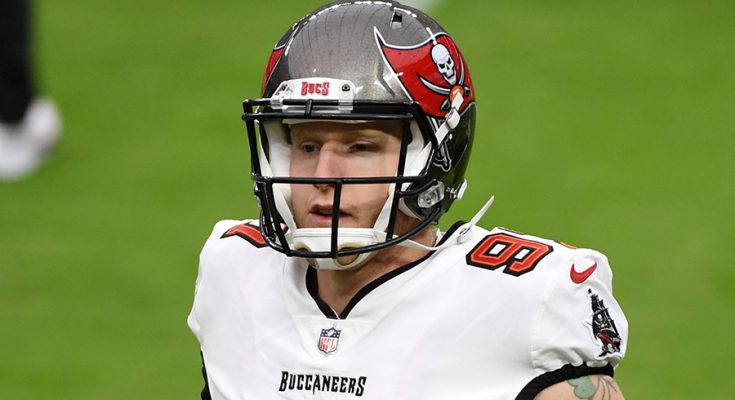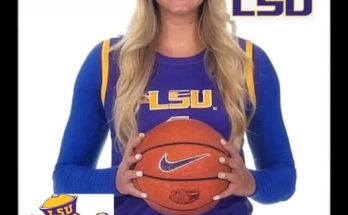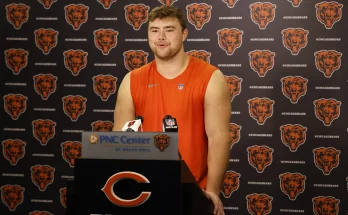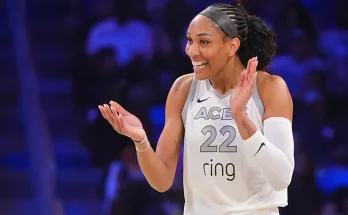The Seattle Seahawks have once again demonstrated that every roster move, no matter how subtle it may appear to casual fans, is part of a broader strategy aimed at building the most complete, prepared, and competitive football team possible. This week’s news out of training camp was another reminder of how the NFL season is shaped as much by behind-the-scenes adjustments as it is by the dazzling highlights on Sundays. The team’s decision to sign a veteran long snapper while simultaneously placing a promising backup safety candidate on injured reserve might not carry the same media buzz as a blockbuster trade or a Pro Bowl signing, but for those who follow football closely, it is a move filled with implications. It speaks to Seattle’s ongoing pursuit of roster balance, special teams stability, and defensive depth even before the first kickoff of the regular season.
The addition of a veteran long snapper may not be headline news for most, but anyone who understands the nuances of special teams knows the importance of consistency in that role. A botched snap on a punt or field goal attempt can be the difference between victory and defeat, and those moments are often magnified late in games when the stakes are highest. In the NFL, a long snapper’s job is one of precision under pressure, a position that rarely gets recognition when things go right but draws instant criticism when things go wrong. The Seahawks’ coaching staff clearly values having a proven, reliable player at this spot, someone who can not only execute perfect snaps in all weather conditions but also serve as a steadying influence for the punter and kicker. In bringing in a seasoned veteran, Seattle is signaling that they have no intention of leaving this essential role to chance, especially with the grind of a long season ahead.
At the same time, the unfortunate news that a backup safety candidate is headed to injured reserve changes the complexion of the team’s depth chart in the secondary. This particular player had been showing promise during camp, making plays in coverage, demonstrating versatility in practice, and positioning himself as a valuable insurance policy behind the starters. While he may not have been penciled in as an immediate starter, depth in the secondary is crucial in today’s NFL, where defensive backs are often called upon to cover a wide range of offensive weapons. Injuries to safeties can ripple through the defense, forcing cornerbacks to shift roles or requiring linebackers to take on more coverage responsibilities, which in turn can weaken run defense. Losing a player with developmental upside is never ideal, and it places more pressure on the remaining safeties to stay healthy and perform.
For head coach Mike Macdonald and general manager John Schneider, these moves are emblematic of the constant balancing act they must perform. The NFL’s 90-to-53-man roster cutdown process is relentless, and injuries like this one to a backup safety can force front offices into action far sooner than they’d like. On one hand, there is the immediate concern of ensuring special teams remain efficient and dependable; on the other, there is the challenge of finding ways to make up for lost defensive depth. Every roster spot matters, and there is a constant chess game between developing young talent and relying on experienced veterans who can step in without a learning curve.
The signing of the veteran long snapper may also have been influenced by chemistry factors. In football, timing and familiarity between the snapper, holder, and kicker are essential. A preseason signing gives these players time to develop rhythm together before games begin to count. For a team like Seattle that expects to be in close contests, having a polished operation in the kicking game can prevent costly miscues. Macdonald has already emphasized discipline and execution in his early tenure, and this addition is consistent with that vision. It’s a recognition that championship-caliber teams leave no detail unattended, even one as specific as the spiral of a long snap.
Meanwhile, the injured safety’s absence could create opportunities for others on the roster who are eager to prove themselves. Training camp is as much about competition as it is about installation of schemes, and an injury in one area can accelerate the evaluation of another player. A young, undrafted free agent or a mid-round draft pick may now get extra reps with the second team, increasing their chances of making the 53-man roster or securing a role on special teams. While losing a player to injured reserve is never desirable, it often becomes a catalyst for unexpected success stories in the NFL. Some of the league’s most reliable contributors have emerged from situations where injuries ahead of them on the depth chart opened the door to opportunity.
For the coaching staff, the challenge now is twofold: integrate the new long snapper seamlessly into special teams operations, and reassess safety depth to ensure there are contingency plans in place for the regular season. Special teams coordinator Jay Harbaugh will no doubt be spending extra time with the new snapper, working to ensure that the transition is smooth and that timing with both the punter and kicker is flawless by Week 1. On the defensive side, defensive backs coach Karl Scott will have to identify which players can take on additional responsibilities, whether that means increased coverage assignments, more aggressive rotation patterns, or cross-training certain corners to fill in at safety if needed.
The Seahawks’ decision-making process here also highlights an important truth about NFL roster building: it is never truly complete. Even in the middle of camp, teams are constantly evaluating talent, scanning the waiver wire, and making subtle shifts to optimize their roster construction. The signing of a long snapper and the placement of a safety on injured reserve may not grab national headlines, but within the Seahawks’ facility, these are meaningful moves that ripple through position groups and game plans. Seattle has built its recent reputation on resilience and adaptability, traits that are reinforced when the team responds swiftly and decisively to roster changes.
The injury to the safety also raises broader considerations about player health and conditioning during training camp. While injuries are an unavoidable part of football, teams invest heavily in sports science, recovery protocols, and workload management in an effort to keep players on the field. Seattle has been proactive in rotating players through drills, limiting contact when possible, and ensuring that those recovering from previous injuries are brought along at the right pace. Unfortunately, even the best-laid plans cannot prevent every setback, and when a young player with potential is sidelined before the season begins, it is a reminder of just how precarious an NFL career can be.
For fans, the takeaway from this week’s news should be that the Seahawks are serious about leaving no stone unturned in their pursuit of competitiveness. Whether it’s shoring up special teams or recalibrating the defensive backfield, every move is designed to strengthen the team’s ability to execute under pressure. The signing of a proven long snapper ensures that a critical but often overlooked phase of the game is in capable hands, while the unfortunate placement of a safety on injured reserve forces the team to dig deeper into its depth chart and perhaps uncover the next hidden gem.
Seattle’s front office and coaching staff have long thrived on finding value in unexpected places, and this situation may end up being no different. The team will now watch closely to see how the new special teams dynamic takes shape and how the secondary responds to the challenge. The road to the regular season is filled with these kinds of adjustments, and the teams that handle them best are often the ones still standing in January. The Seahawks believe they are one of those teams, and their actions this week show they are willing to make whatever moves are necessary to ensure they remain in the hunt.
In the end, the quiet signing of a veteran specialist and the tough loss of a young defensive hopeful are just two more chapters in the ever-evolving story of the NFL offseason. They may not make the highlight reels, but they matter deeply to the players, coaches, and fans who understand that in football, every detail counts. The Seahawks are betting that these details will add up to a team capable of contending, and they will continue to adjust, adapt, and prepare until the first whistle blows. This is the grind of the NFL, and in Seattle, it’s embraced as part of the journey toward building a winner.



